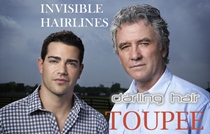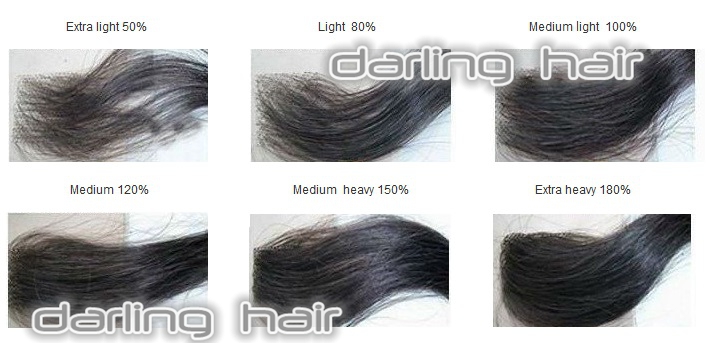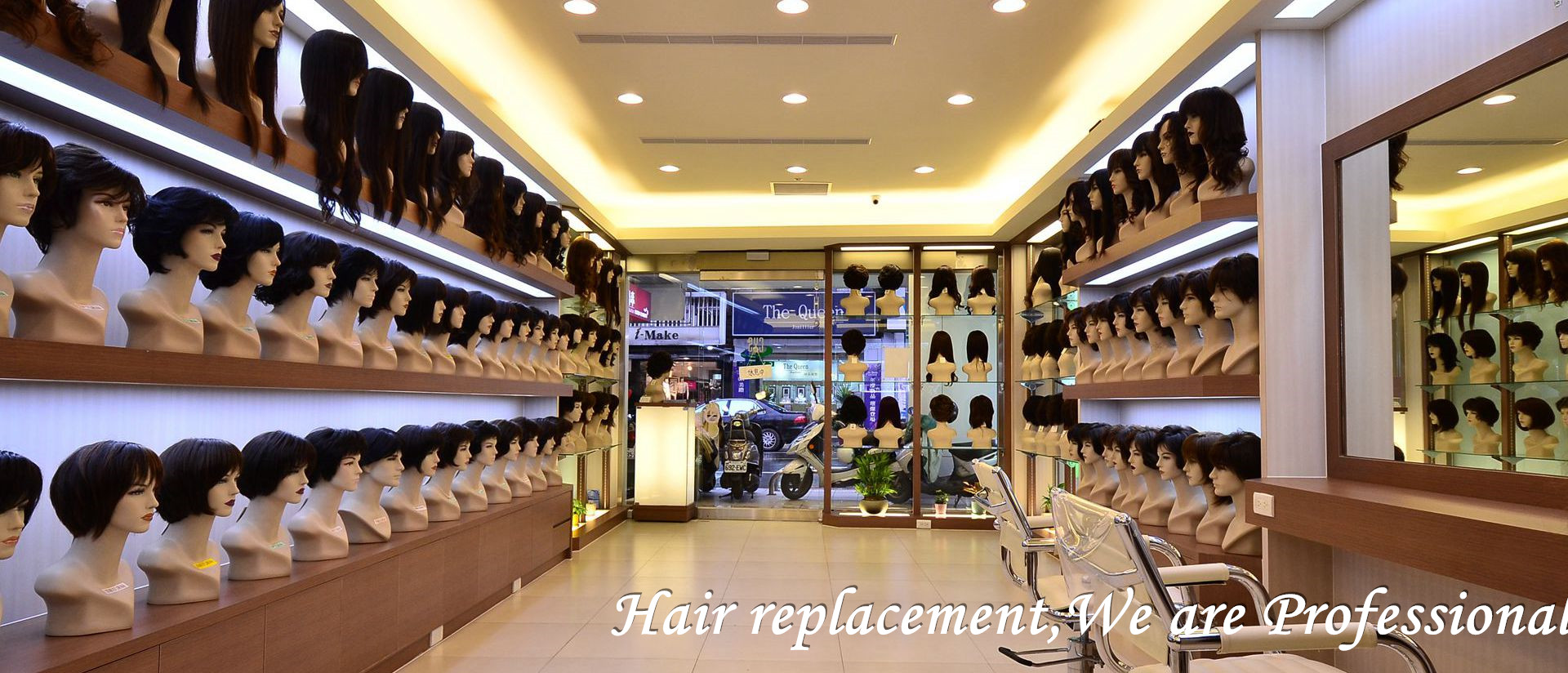


Choosing the correct
density is one of the most essential factors in ensuring your hair system looks
unbelievably natural. It is pointless investing in a hair system that is
obvious and detectable as a result of choosing the wrong density and the simple
truth is that an unnatural looking hair system can be noticed from far away.
One of the main reasons why most other hair systems are so easily detectable is
a result of unnaturally thick hair.
We strongly recommend
that when choosing your density you opt for a transitional density that
replicates nature. This means selecting a density coverage which has a subtle
graduation to it just like real growing hair.
Some might believe
that choosing a heavy density everywhere will mean that their hair system lasts
longer. This is not the case as the quality of workmanship and after-care
determine the life span of a hair system and if you opted for this choice all
you would end up with is an unnatural looking hair system that is inferior and
detectable.
At Darling hair we
offer different densities to suit every need. This gives you the flexibility to
reduce or increase the density in different parts of your hair systems, thus
enabling you to create a natural transitional density that is similar to
natural growing hair. This gives your hair a more natural appearance that is
authentic to nature. This is where we are different. All of our system bases
create a flawless illusion of hair appearing to grow directly out of your
scalp. Even under the closest inspection, all you see is hair and scalp!
Please review the
following density selections and choose a density pattern from the selections.

Hair density is the
amount of hair strands on the head. Generally, it is measured by counting the
number of hair strands found in one square inch (2.5cm) of scalp. When a
stylist tells you that you have thick hair, it is high density he/she is
describing. Generally, the classifications of hair density are thin, medium,
and thick, and are unrelated to the texture of the hair. The average head has
approximately 2,200 strands of hair per square inch, and a total of
approximately 100,000 hairs.
|
Extra light 50% |
Is way too thin |
|
Light 80% |
This is an extra
light density, will show your scalp when parted to make it look unreal. |
|
Medium light 100% |
This hair density is
like thin hair and will show your scalp when parted. This hair density is
suitable for women over the age of 65, and will look natural. |
|
Medium 120% |
This hair density is
the regular hair density of most wigs on the market, today. |
|
Medium heavy 150% |
This hair density is
a normal wear, suitable for a woman in their twenties, their thirties or even
their forties. |
|
Extra heavy
180% |
This hair density is
too heavy for normal wear. This hair density is usually used for heavy theatrical
wig. |
We have certainly
noticed a recent trend towards lighter densities and our hair systems give you
the flexibility to reduce the density and expose some scalp giving your hair a
much more natural appearance.
Selecting the correct
density is determined by many factors:
---Your own hair density. It is important to choose a density
that matches your remaining hair at the sides and back. This will help to blend
your system into your existing hair.
---Age. A younger man could choose a thicker
density (such as medium) and still look natural, providing your remaining hair
is a similar density. Whereas, as we begin to age it is common for our hair to
gradually reduce in density so a lighter density would render a much more
natural appearance.
---Hair style. Thick hair is well suited to layered
styles, while thin hair is often better suited to more blunt styles. People
with thin hair often prefer styles with added curl to give an illusion of more
hair.
FAQ regarding hair density:
Q1:
Is your density scale the same as other suppliers?
Not necessarily. Factories all over the world use similar, but not always the
same, density scale. Our factory uses the number of individual hair stands per
square centimeter, ranging from 30 hairs per square cm to 150 hairs per square
cm. 30 hairs per square cm would be considered an extremely thin, light density
and 150 hairs per square cm would be considered an extremely thick, heavy
density.
Q2:
Will my density affect my choice of base design?
Absolutely! The lighter the density, the finer and lighter the base material
must be. Example: If you choice 30% density, the base must be extremely
invisible, the finest Swiss lace (or French Lace). A heavier density can support a heavier, stronger base.
It is important to remember that when using heavier base
materials and heavier densities you sacrifice a natural appearance but you
gain durability.
Q3:
Can my density be adjusted after the unit is delivered?
Yes, but it isn't recommended. It can easily be thinned with a thinning shear.
The problem is when the hair on the hair system is thinned even as close to the
base as possible, it leaves stubbles of hair down against the base. That
stubble feels like a one week beard growth and could be unpleasant to the
touch. In addition, all the hairs that have been thinned out now have
unnecessary knots remaining in the base that still need to be concealed for a
more natural look. NOTE: Thinning is not to be confused with BLENDING.
Q4:
Can I order different densities in different parts of the unit?
Yes, it is possible for unusual style requirements but it’s your best bet not
to try to be a rocket scientist when ordering your hair system. We've found
that when it comes to your hair system it's always a good idea to use the KISS
theory. That is... Keep It Simple Stylist.
Q5:
What is a good density for a man in his sixties?
We rarely recommend more than 60 hairs per cm for
a man in his 60s, unless he has a very unusual density for his age
Q6:
Are the density recommendations different for a female?
Not necessarily, but most ladies prefer a higher density then men.
Q7:
Can I order between your density percentages?
Our densities go up in incarnates of 10, starting from 30 to 150. All the hair
is hand tied. This is just a communication tool and is an art, not a science.
In being such, you can never get the exact numbers of hairs per square cm. in
one hair system that you do in another.
Q8:
Is there a maximum density for lace front or full lace hair systems?
You can order any density you want with the lace bases although it is not
logical to order a medium to full density with lace because you can’t see down
through it. Although conventional tops using lace fronts with medium to full
density will make sense especially with brush back styles and using high
definition hair lines.
Q9:
If heavy density is the same price, shouldn't I just go for maximum hair?
Even if its free, getting too much density for your age and hair type will
prevent it from looking as natural as possible. And, it can hurt the hair
system to thin it after the fact.
Q10:
I ordered the same density twice but one unit is a bit lighter than the other.
Why?
Because designing and making hair replacement systems is an art form,
more than a science. Plus, each system is crafted from the ground up in the
hands of a skilled ventilator. By the same token, there are no two snowflakes
exactly the same.







